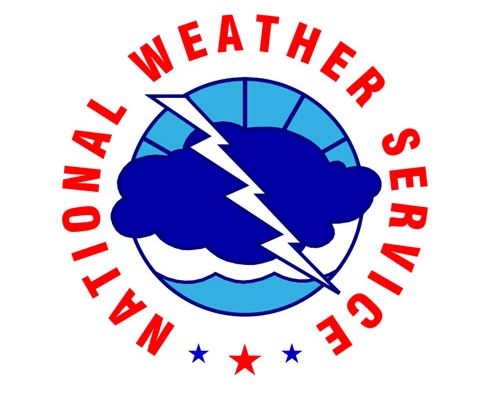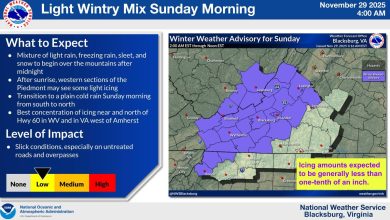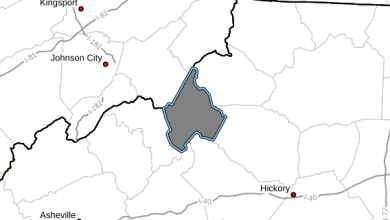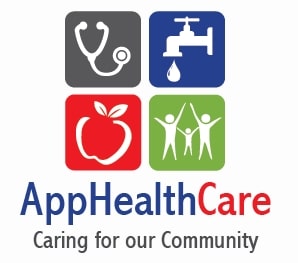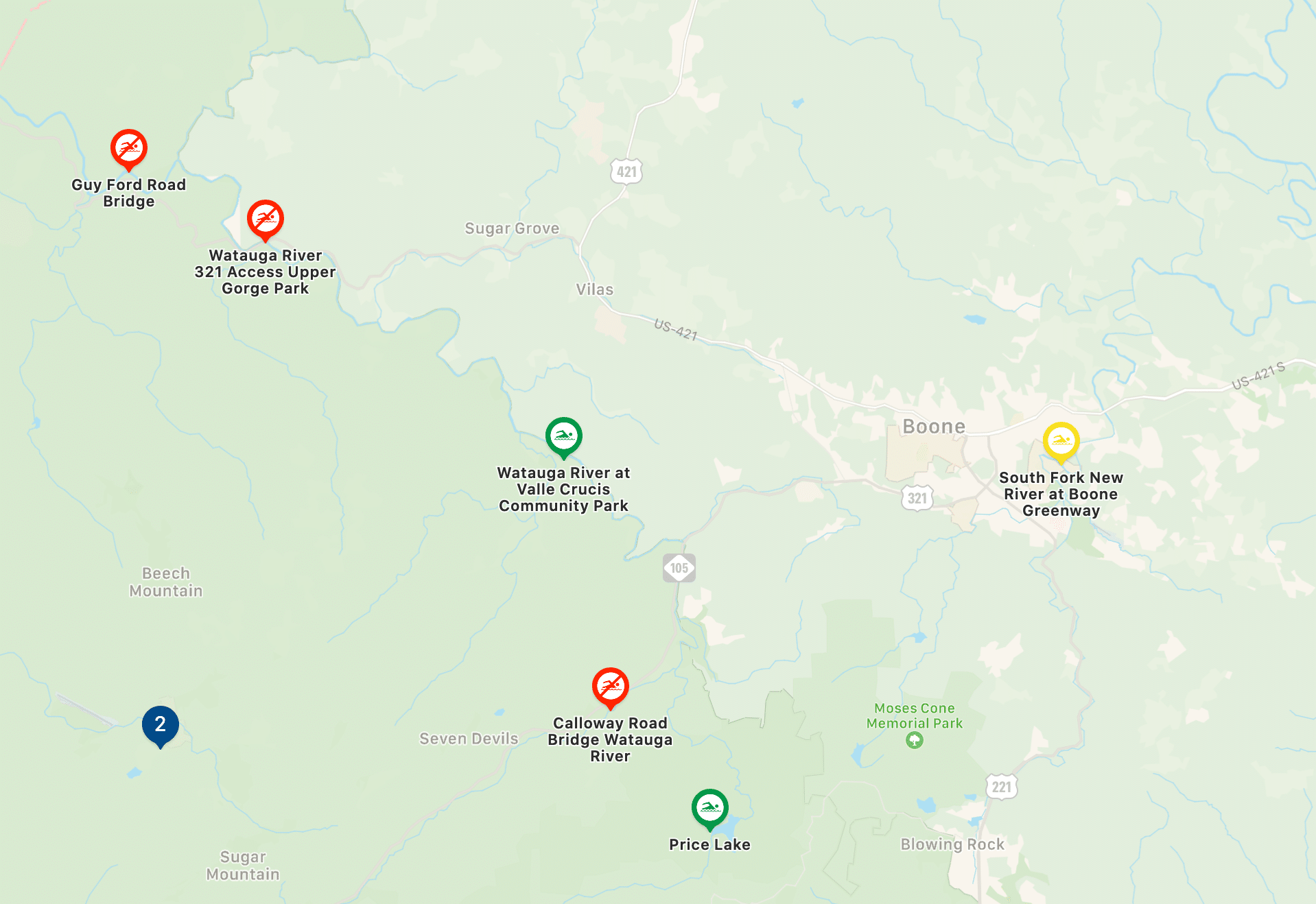
Last Updated on July 11, 2020 7:20 am
Each Friday afternoon throughout the spring, summer and fall, the Watauga Riverkeeper releases new, up-to-date bacteria monitoring results for eleven monitoring sites at public access points within the Watauga River Basin. Results are posted to the Swim Guide website at theswimguide.org – the public’s best resource for knowing which streams and river recreation areas are safe to swim in, and which have failed to meet safe water quality standards for bacteria pollution.
The Swim Guide lists each testing site as either passing or failing according to the EPA limit for E. coli in recreational waters of 235 cfu (or colony forming units) per 100 milliliters.
This Week’s Results:
Of the 17 Swim Guide sites tested in the Watauga Basin, five sites did not meet the EPA standard for E.coli. Those sites are as follows:
- Calloway Road Bridge
- Guy Ford Road Bridge
- Watauga River Gorge Access
- South Fork New River at Boone Greenway
- Todd Island Park
“We had drier conditions this week which have resulted in better results across the watershed including all Watauga Lake and Tennessee tailwater sites passing,” explains Watauga Riverkeeper Andy Hill.
Samples are collected on Thursdays, processed using the Idexx system, incubated for 24 hours, and results are analyzed and posted on Friday afternoons. Results are available on the Swim Guide website (theswimguide.org) or on the smartphone app, available for Android and Apple iphones.
E.coli bacteria makes its way into our rivers and streams from sewer/septic leaks and stormwater runoff – especially runoff from animal agricultural operations with substandard riparian buffers. E.coli can also indicate the presence of other, more harmful microbes, such as Cryptosporidium, Giardia, Shigella, and norovirus. Heavy rains and storms often result in spikes in E.coli contamination, increasing the risk to human health. Contact with or consumption of contaminated water can cause gastrointestinal illness, skin, ear, respiratory, eye, neurologic, and wound infections. The most commonly reported symptoms are stomach cramps, diarrhea, nausea, vomiting and low-grade fever.
In general, waterways that are located in more remote areas or near protected public lands that lack a lot of agriculture, development or industrial pollution sources are the cleanest and will be less affected by stormwater runoff. Areas closer to development and polluting agricultural practices are much more heavily impacted.
About MountainTrue:
MountainTrue is Western North Carolina’s premier advocate for environmental stewardship. We are committed to keeping our mountain region a beautiful place to live, work and play. Our members protect our forests, clean up our rivers, plan vibrant and livable communities, and advocate for a sound and sustainable future for all residents of WNC. MountainTrue is home to the Broad Riverkeeper, French Broad Riverkeeper, Green Riverkeeper, and Watauga Riverkeeper — the protectors and defenders of their respective watersheds. www.mountaintrue.org
About Waterkeeper Alliance:
Waterkeeper Alliance is a global movement uniting more than 300 Waterkeeper Organizations and Affiliates around the world, focusing citizen advocacy on issues that affect our waterways, from pollution to climate change. Waterkeepers patrol and protect over 2.5 million square miles of rivers, streams and coastlines in the Americas, Europe, Australia, Asia, and Africa. For more information please visit: www.waterkeeper.org










